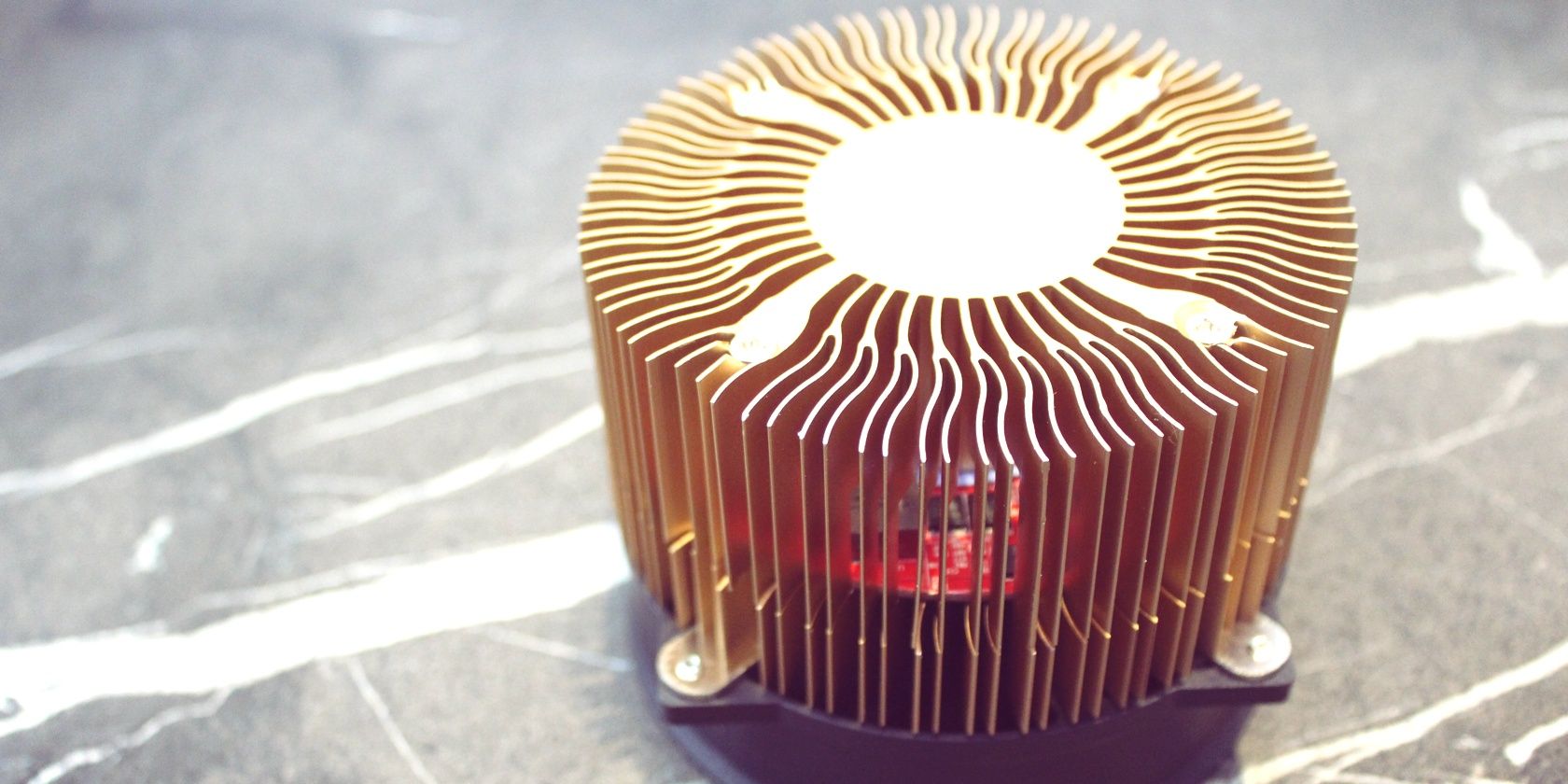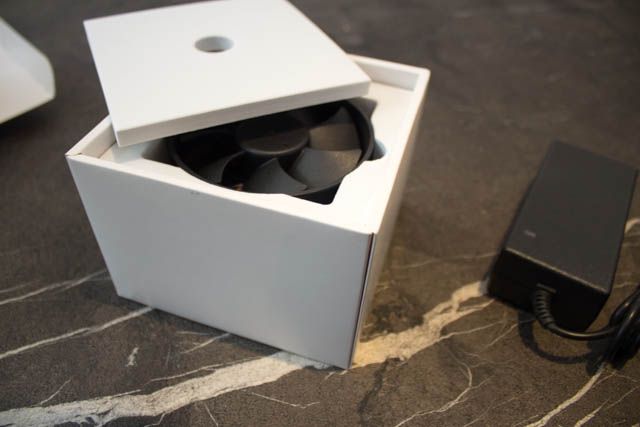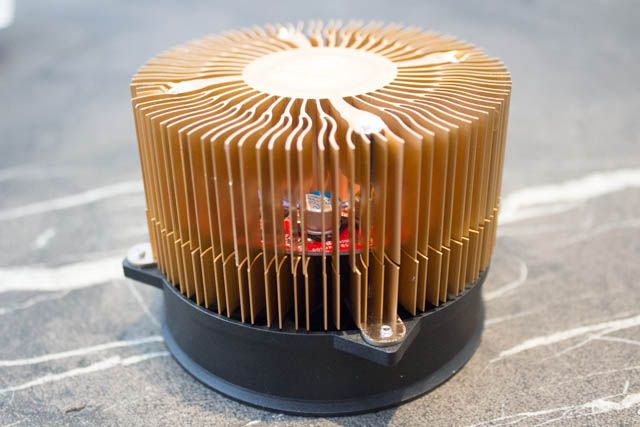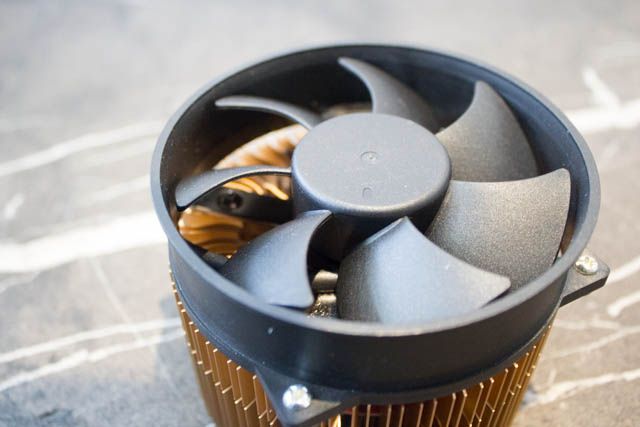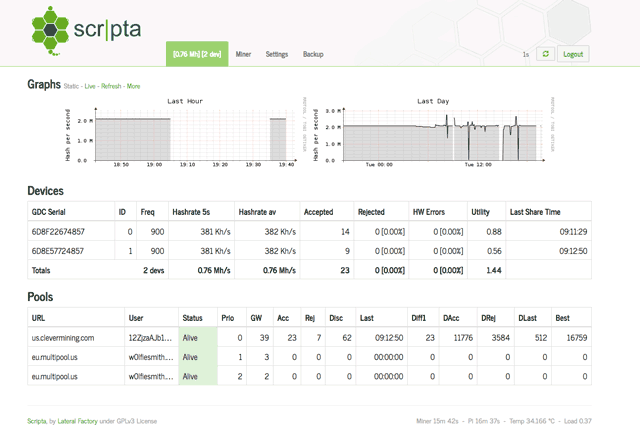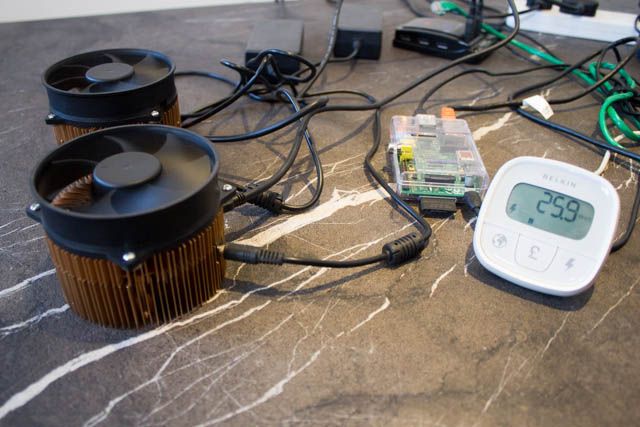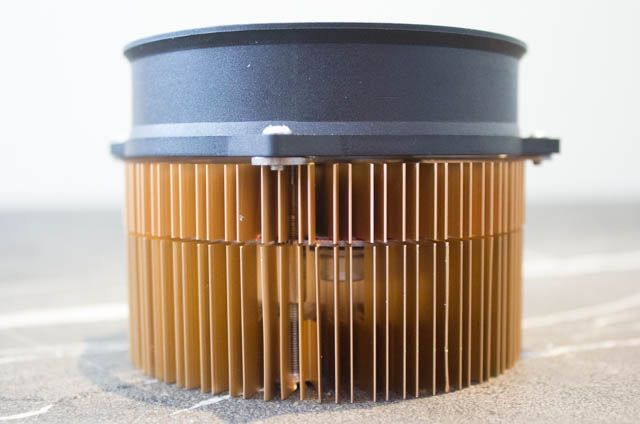Gridseed Mini ASIC Miner
Buying one is a gamble. Once eclipsed by bigger and better models, they'll be worthless - at least a graphics card is good for gaming.
ASICs are game-changers in the world of crypto-currencies: the once GPU-intensive and power inefficient task of running a blockchain can now be handed over to Scrypt ASICs which use 1/20th of the power. A few months ago, most people refused to believe these things even existed - now I have two in my hands, one of which we'll be giving away to a lucky reader. Are these the money-making machines we want them to be be?
The Gridseed Mini ASIC Miner is available for $160 with power supply and free shipping. It's a small, 5-chip device, but if you pay $1000, you'll get the more powerful Gridseed Blade with 80 ASIC chips. Also on the horizon is The Fury from GAWMiners, which promises 1MH/s of Scrypt miningg at only $219 - it's due for launch in June, but given that the site only has 3D renders and has until now just been a distributor, it's possible it's vaporware.
What's An ASIC?
ASIC stands for Application Specific Integrated Circuit, which means a chip which has been designed to do one specific thing only - and is therefore faster or more efficient at doing it. A computer, on the other hand, is a generic device that can be programmed to do anything given the right instructions, but uses more power to do so. The Gridseed ASIC is adept at the hashing calculations required to secure a cryptocurrency blockchain (either Bitcoin or Scrypt based), but it can't do anything else. Typically, ASICs can be used only for one or the other type of cryptocurrency, but Gridseed is unique in that it can hash both Bitcoin and Scrypt coins simultanously.
Hashing speeds are currently measured in Megahashes Per Second (for Bitcoin) and Kilohashes Per Second (for Scrypt coins), though as more powerful hardware is released we'll no doubt see the term Terahashes used too. The naming follows computer convention, so 1 MH/s = 1,000 kH/s. A common point of confusion surrounds speeds when applied to Bitcoin vs Scrypt coins - the speeds you see you when hashing Bitcoin are 1,000 times greater than those for Scrypt coins as the calculation is computationally more difficult. Many first time miners will fire up the software without configuring it to mine using the Scrypt algorithm, and are confused when they see much greater numbers than everyone else reports.
First Impressions
The Gridseed ASIC miner arrived with USB cable and power supply packaged separately, in a simple white box with foam holding the Gridseed safely during transit.
Loosely speaking, from a technology porn perspective, the Gridseed is gorgeous - a huge copper heat sink sandwiches the 5 chips discreetly inside. A single demure red and green LED provides activity feedback, though there's no indication what each one actually means. A few sources suggest the green LED lights up when 5V is connected, while the red LED indicates hashing. Either way, this is some seriously sexy hardware.
I've shown it above with the heat sink facing up for illustration only - in fact, the fan should be placed on the top during operation, as it sucks in air and blows it over the copper for cooling. The fan is far more powerful than it needs to be - there's no danger of the Gridseed overheating, and they can be comfortably overclocked from the standard 700MHz to 900MHz, resulting in very few hardware errors at a tidy 380KHs. Some users have even removed the fan completely, then stacked a tower of ten Gridseeds cooled by just a single fan.
Mining Modes
As its "dualminer" name suggests, the Gridseed can mine both Bitcoin and Litecoin simultaneously; or it can mine one, or the other.
In BTC-only mode, the unit works at up to 10GH/s, which is similar to the Butterfly Labs 10GH/s model ($249) [Broken URL Removed], but at a slightly lower price point. In dual crypto-currency mode, power consumption goes up to 60W, but BTC mining rate goes down to 8GH/s, in addition to Scrypt-mining just less than 300KH/s.
The best way to run them is in LTC/Scrypt-only mode, where they can be overclocked to achieve 360-380KH/s while using just 8-10W of power. Compared to a mid-range video card which will achieve roughly the same hash rate, but use around 200w power, you will realise that the Gridseed chips are up to 20 times more efficient.
Controller Required
There is zero documentation - no quick start guide, no software, no links to driver packages to download. Everything you do with these ASIC miners will be based on forums and blog posts - the best site I've found for tutorials on is Crypto Mining Blog - and a certain level of technical ability is assumed. If you don't know how to burn an SD card image, or create a batch file in Windows - these devices probably aren't for you. They are very much not plug and play.
Although the Gridseed devices will take care of the grunt work, a controller of some form is still required to fetch and distribute work units. You can, of course, use a computer (guide), but this somewhat diminishes the power efficiency; or you can buy a separate dedicated hardware controller, able to manage up to 50 Gridseed units.
I've chosen to use a Raspberry Pi with a pre-built SD card image called Scripta - simply add network connectivity, and powered USB hub. Scripta is self-contained with its own web interface for modifying settings and adding your own pools; no local configuration is required so you needn't plug in a mouse or monitor. With a network switch, the Raspberry Pi itself, a USB hub and two GridSeed units, my power consumption was still only 26W in total - and each Raspberry Pi can reliably handle up to 10 Gridseed miners at once.
Realistic Profits
Discussing ROI (Return On Investment, the point at which you break even with consideration to the hardware investment versus profit) is somewhat pointless due to a number of factors at play, not limited to:
- Proliferation of better ASICs - as I mentioned, there's always more efficient ASICs promised next month, but they may not actually exist or may not be delivered on time. Better ASICs will undoubtedly arrive, but the question is when? There's also a conspiracy theory that ASICs are only ever shipped once the ROI becomes impossible: if you created money-making machines, wouldn't you simply keep them for yourself (then sell them)?
- Coin value - are you going to stick to one particular coin, or join a profit-switching multipool? You may want to auto-trade everything for Bitcoins, and if the value of Bitcoin rises... well, you get the idea.
- Electricity costs - in my locality, electricity is $0.24/KWh - yours may be more like 10 cents.
The most profitable way to run one of these is in Scrypt-only mode, but even then, if you were, for instance, to focus only on Dogecoin, you're only looking at about 50 cents per day (or 1,000 Dogecoins) thanks to currently low prices and high difficultly. Using this Dogecoin calculator, with worst case scenario, ROI is essentially impossible. Best case scenario - the value of the coins increasing 10-fold, ROI would be in about a month. A popular profit-switching pool, which mines the most profitable Scrypt coin and immediately trades them for Bitcoins, is at the time of writing estimating 0.00357 BTC per day per MH/s, which would work at to around 0.00128 BTC per day for each Gridseed device. It all depends on whether you want to hold a specific coin because you believe in it (to the moon, fellow Shibes!), or think that ultimately Bitcoins will rocket in value yet again.
Is It Worth It?
Mining is a gamble at this point. ASICs are required to harden a network, and if the altcoins experience the same growth that Bitcoin has, we'll all be laughing our way to mansions and diamond encrusted unicorns this time next year. In reality, we might be able to trade-up to a second hand Ford Mondeo. If you're only interested in the financials, then purchasing and holding your coin is the best option; if you're a geek who wants to get in on the action and be a part of something amazing, a Scrypt ASIC is an interesting prospect - just don't lie to yourself about the millions to be made.
[recommend]MakeUseOf recommends: Buying one is a gamble. Once eclipsed by bigger and better models, they'll be worthless - at least a graphics card is good for gaming.[/recommend]
How do I win the Gridseed ASIC Miner?
You may enter by submitting your name and email address. You'll receive one entry simply by doing so.
After that, you'll also be offered various methods to earn additional entries. They range from sharing a link to this giveaway on social networks; to commenting or visiting a specific page. The more you participate, the higher your chances of winning! You will receive 5 additional entries into the giveaway for every successful referral via your shared links.
This giveaway begins now and ends Friday, May 23. The winner will be selected at random and informed via email. View the list of winners here.
The Winner
Congratulations, Simon Butler! You would have received an email from jackson@makeuseof.com. Please respond before June 11 to claim your prize. Enquires beyond this date will not be entertained.
Send your products to be reviewed. Contact Jackson Chung for further details.

